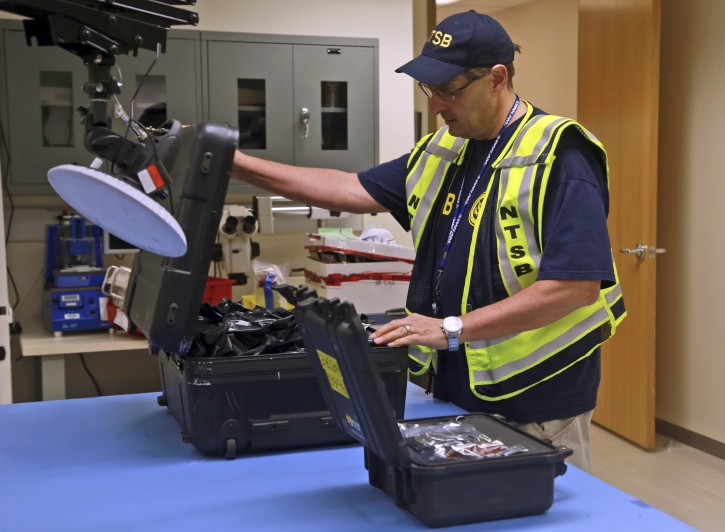
Hoboken, NJ – Federal investigators estimate a commuter train was traveling two to three times the 10 mph speed limit when it slammed into a New Jersey rail station last week, a U.S. official told The Associated Press on Tuesday.
The official, who was briefed on the investigation, said investigators estimated the train was moving between 20 and 30 mph when it crashed into Hoboken Terminal last Thursday. The official was not authorized to speak about an ongoing investigation and spoke to the AP on condition of anonymity.
The speed estimate is based on the extent of damage, not on data from the train’s instruments.
Federal investigators recovered a data recorder, video recorder and the engineer’s cellphone from the front car of the train Tuesday afternoon and sent them to an agency lab for analysis.
National Transportation Safety Board investigator James Southworth said they don’t yet know if the recorders contain any useful information.
Access to the devices had been hampered by debris from the crash.
Southworth said it would be at least a day before investigators are able to move the crashed train. He said New Jersey Transit service into and out of Hoboken wouldn’t resume before then.
A second data recorder, in the locomotive at the rear of the train, wasn’t functioning the day of the crash and didn’t record speed, braking or other information about the trip, the NTSB has said.
That recorder was built in 1995. The recorder recovered Tuesday was made in 2003, investigators said.
Engineer Thomas Gallagher’s cellphone was found in a backpack in the cab of the front train car.
At a briefing Tuesday, NTSB investigator James Southworth declined to address the train’s speed. “We’re not prepared to make that statement right now,” he said.
One woman standing on a platform was killed by debris as the train smashed through a concrete-and-steel bumper and knocked out pillars, causing a section of the station’s outdoor roof to collapse.
More than 100 people were injured.
Gallagher told investigators that he had no memory of the crash but said he was operating at 10 mph as he approached the station, said T. Bella Dinh-Zarr, the vice chair of the National Transportation Safety Board.
Gallagher, 48, said he only remembered waking up on the floor of the engineer’s cab, Dinh-Zarr said Sunday.
Federal regulations require commuter trains to have working recorders. The regulations require they be inspected every 92 days. It was unclear when the nonworking recorder, which officials said was installed in 1995, had been last inspected.
The commuter rail service has not responded to requests for comment.
As reported by Vos Iz Neias
